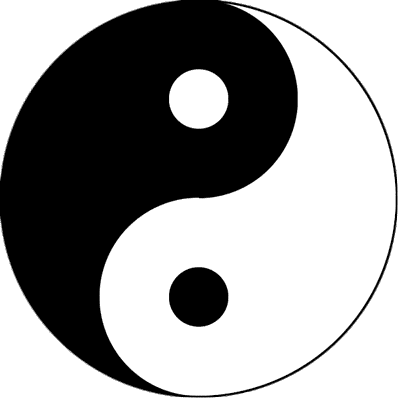The Yellow Emperor’s Inquiry: The Symphony of Human Health
The heart harmonizes with the vessels, and the complexion reveals the kidneys’ state. The lungs nourish the skin, and the hair reflects the heart’s condition. The liver enriches the tendons, and the nails indicate the lungs’ state. The spleen integrates with the muscles, and the lips mirror the liver’s well-being. The kidneys fortify the bones, and the hair reveals the spleen’s condition. Overeating salty foods can cause blood stasis and facial discoloration. Excessive bitter foods lead to dry skin and hair loss. Too much spicy food tightens tendons and dries nails. Sour foods in excess cause thickened muscles and chapped lips. Overindulgence in sweets causes bone pain and hair loss. This illustrates the harm of imbalanced consumption of the five flavors. The heart desires bitterness, the lungs spiciness, the liver sourness, the spleen sweetness, and the kidneys saltiness. These correspondences between flavors and the organs maintain health.
The face exhibiting a dead-grass green, sallow yellow, ash black, blood-red, or bone white is a harbinger of death. Conversely, colors like kingfisher green, rooster comb red, crab yellow, pork fat white, and crow feather black indicate vitality and a good prognosis. The heart’s vitality shows as white silk wrapped around cinnabar; the lungs as white silk with pink silk; the liver as white silk with azure silk; the spleen as white silk with melon pulp; and the kidneys as white silk with purple silk. These colors reflect the organs’ external manifestations of life.
The five colors and flavors correlate with the five organs: white and spiciness to the lungs, red and bitterness to the heart, green and sourness to the liver, yellow and sweetness to the spleen, and black and saltiness to the kidneys. The external aspects of the organs manifest through the five structures: white to the skin, red to the vessels, green to the tendons, yellow to the flesh, and black to the bones. Each meridian belongs to the eyes, each marrow to the brain, each tendon to the joints, each blood vessel to the heart, and each Qi to the lungs. The circulation of Qi and blood remains continuous, never leaving the limbs and joints.
During sleep, blood returns to the liver, nourishing the eyes for vision, the feet for walking, the hands for gripping, and the fingers for grasping. If one goes out into the wind immediately after waking, blood circulation stagnates, causing numbness in the skin, Qi and blood blockage in the meridians, or coldness in the feet. These conditions arise because Qi and blood cannot return to their proper channels, resulting in numbness or cold extremities.
The body contains twelve large valleys and 354 small valleys, excluding the acupoints of the twelve organs. These are sites where protective Qi resides and where pathogens can dwell. Treating illnesses involves targeting these areas with acupuncture to expel pathogens. Diagnosing diseases hinges on understanding the five differentiations of the organs, using their pulses to determine the root cause of illnesses. For example, headaches at the crown belong to deficiency below and excess above, involving the Shaoyin and Taiyang meridians, potentially affecting the kidneys. Dizziness, swaying, blurred vision, and deafness suggest excess below and deficiency above, involving the Shaoyang and Jueyin meridians, potentially affecting the liver. Abdominal fullness, chest and rib distension, and reverse Qi indicate the Taiyin and Yangming meridians. Coughing and wheezing with chaotic chest Qi involve the Yangming and Taiyang meridians in the hands. Agitated heart, headache, and chest discomfort involve the Taiyang and Shaoyin meridians in the hands.
Doctors can discern small, large, slippery, choppy, floating, and sinking pulses through touch. They can infer organ functions through analogy, recognize organ sounds intuitively, and observe subtle color changes visually. Combining pulse and color analysis ensures accurate diagnosis. For example, a rapid, firm pulse with a red complexion suggests Qi accumulation in the middle burner, hindering digestion, called heart bi. This condition arises from external pathogens invading due to weakened heart Qi from excessive worry. A white complexion with a rapid, floating pulse indicates deficiency above and excess below, causing fright, Qi accumulation in the chest, and asthma, named lung bi, often triggered by post-intoxication intercourse. A green complexion with a long, strong pulse indicates Qi accumulation below the heart, affecting the ribs, named liver bi, caused by cold and dampness, with symptoms like back pain, cold feet, and headache. A yellow complexion with a weak, large pulse suggests Qi accumulation in the abdomen, producing reverse Qi, named jue shan, often triggered by intense physical activity and sweating. A black complexion with a firm, large pulse indicates Qi accumulation in the lower abdomen, named kidney bi, often caused by cold water exposure during sleep. Observing five-color changes reveals vital insights: yellow face with blue, red, white, or black eyes signifies survival due to residual earth Qi. Blue face with red, red face with white, blue face with black, black face with white, or red face with blue eyes signifies impending death, indicating depleted earth Qi.
